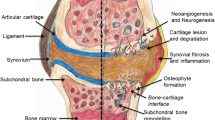Summary
Hemophilic arthropathy is the result of recurrent joint bleedings in patients with severe haemophilia A or B and von Willebrand Syndrome. Conservative orthopaedic treatment is preferred in every stage of the arthropathy. Synovectomy is indicated only after failure of the conservative regimen after 3 to 6 months in order to control synovitis and recurrent bleeding. This paper presents the indications, methods, and results of different joint preserving operations. Especially synovectomy of the elbow joint with or without radial head resection shows very good long term results. Radiosynoviorthesis is an alternative in certain cases. The end stages of hemophilic arthropathy are characterised by pronounced joint contractures. We achieved very good long term results by implanting total hip joints (n = 13) and total knee joints (n = 20) with a median follow up of 102 respectively 53 months. No perioperative complications like bleeding or infection were registrated. Only one aseptic loosening of a cemented cup occurred 14 years postoperatively as well as one septic loosening 14 months postoperatively in an HIV-positive haemophilic. Another HIV positive patient developed a hematogenic abscess on both operated on hips without loosening of the endoprosthesis. Bicondylar prosthesis (n = 14) showed 6 very good, 6 good and 2 fair results in the HSS-score. Only one subsidence of an uncemented tibia plateau without definitive loosening occurred 55 months later. The functional results of constrained knee endoprostheses (n = 6) were not as good (2 good, 2 fair, 2 poor). However, these patients suffered preoperatively from severe contractures and malalignments. Aseptic loosening or late infections did not occur even in case of HIV infections.
Zusammenfassung
Als Folge rezidivierender Gelenkeinblutungen entwickeln sich bei schweren Formen der Hämophilie A oder B bzw. eines Willebrand-Syndroms chronische Gelenkveränderungen im Sinne einer sog. hämophilen Arthropathie. In allen Stadien der Arthropathie stehen konservative Behandlungsmaßnahmen im Vordergrund. Erst bei erfolgloser konservativer Therapie über 3–6 Monate ist in den frühen Stadien eine operative Synovektomie zur Kontrolle der Synovitis und der rezidivierenden Blutungen angezeigt. In dieser Arbeit werden die Indikationen, Methoden und Ergebnisse verschiedener gelenkerhaltender Operationen dargestellt und diskutiert. Vor allem die Synovektomie am Ellenbogen mit und ohne Radiusköpfchenresektion (n = 7) führt zu sehr guten funktionellen Langzeitergebnissen. Alternativ kann in bestimmten Fällen eine Radiosynoviorthese durchgeführt werden. Die Endstadien der hämophilen Arthropathie sind oftmals durch ausgeprägte fibröse Kontrakturen gekennzeichnet. Durch die Implantation von Hüftendoprothesen (n = 13) bzw. von Knieprothesen (n = 20) konnten in diesen Stadien nach durchschnittlich 102 bzw. 53 Monaten sehr gute Langzeitergebnisse erzielt werden. Perioperative Komplikationen, wie Blutungen oder Infektionen, wurden in keinem Fall registriert. Bei den Hüftprothesen trat nur eine aseptische Lockerung einer zementierten Pfanne nach 14 Jahren und eine septische Lockerung nach 14 Monaten bei einem HIV-positiven Patienten auf. Auch bei einem 2. HIV-positiven Patienten entwickelte sich eine hämatogene Abszedierung ohne Prothesenlockerung. Am Kniegelenk konnten mit einer bikondylären Prothese (n = 14) 6 sehr gute und 6 gute sowie 2 mäßige Ergebnisse mit HSS-Score festgestellt werden. Es trat nur eine Sinterung eines zementfrei implantierten Tibiaplateaus ohne vollständige Lockerung nach 55 Monaten auf. Die funktionellen Ergebnisse mit einer achsgeführten Endoprothese (n = 6) waren demgegenüber ungünstiger (2mal gut, 2mal mäßig, 2mal schlecht), wobei diese Patienten bereits präoperativ erhebliche Kontrakturen und Fehlstellungen aufwiesen. Lockerungen oder Spätinfekte wurden auch bei HIV-positiven Patienten in keinem Fall einer Knieendoprothese beobachtet.
Similar content being viewed by others
Author information
Authors and Affiliations
Rights and permissions
About this article
Cite this article
Hovy, L. Joint preserving procedures and endoprostheses in hemophiliacs – indications and long term results. Orthopäde 28, 356–365 (1999). https://doi.org/10.1007/PL00003618
Published:
Issue Date:
DOI: https://doi.org/10.1007/PL00003618



